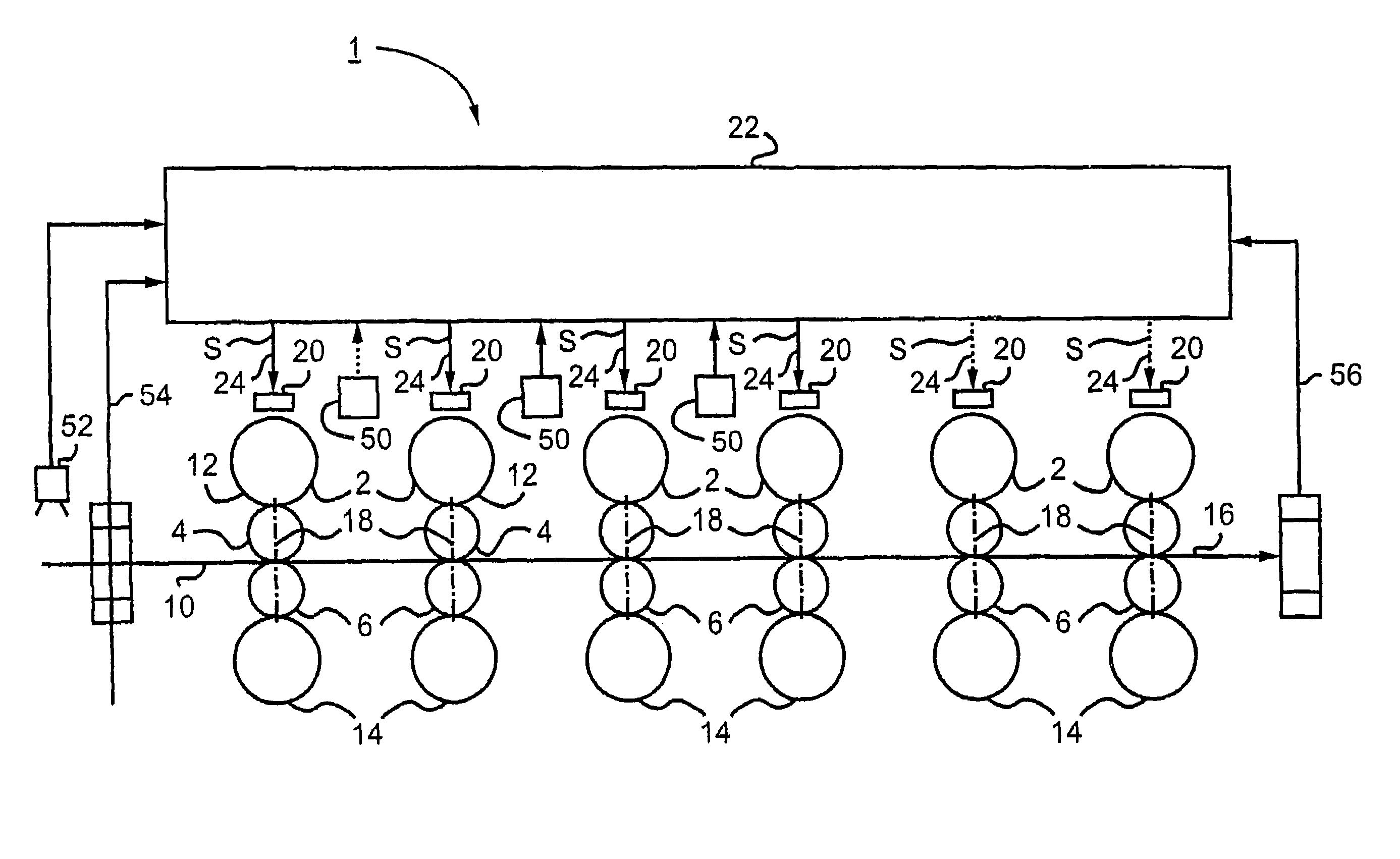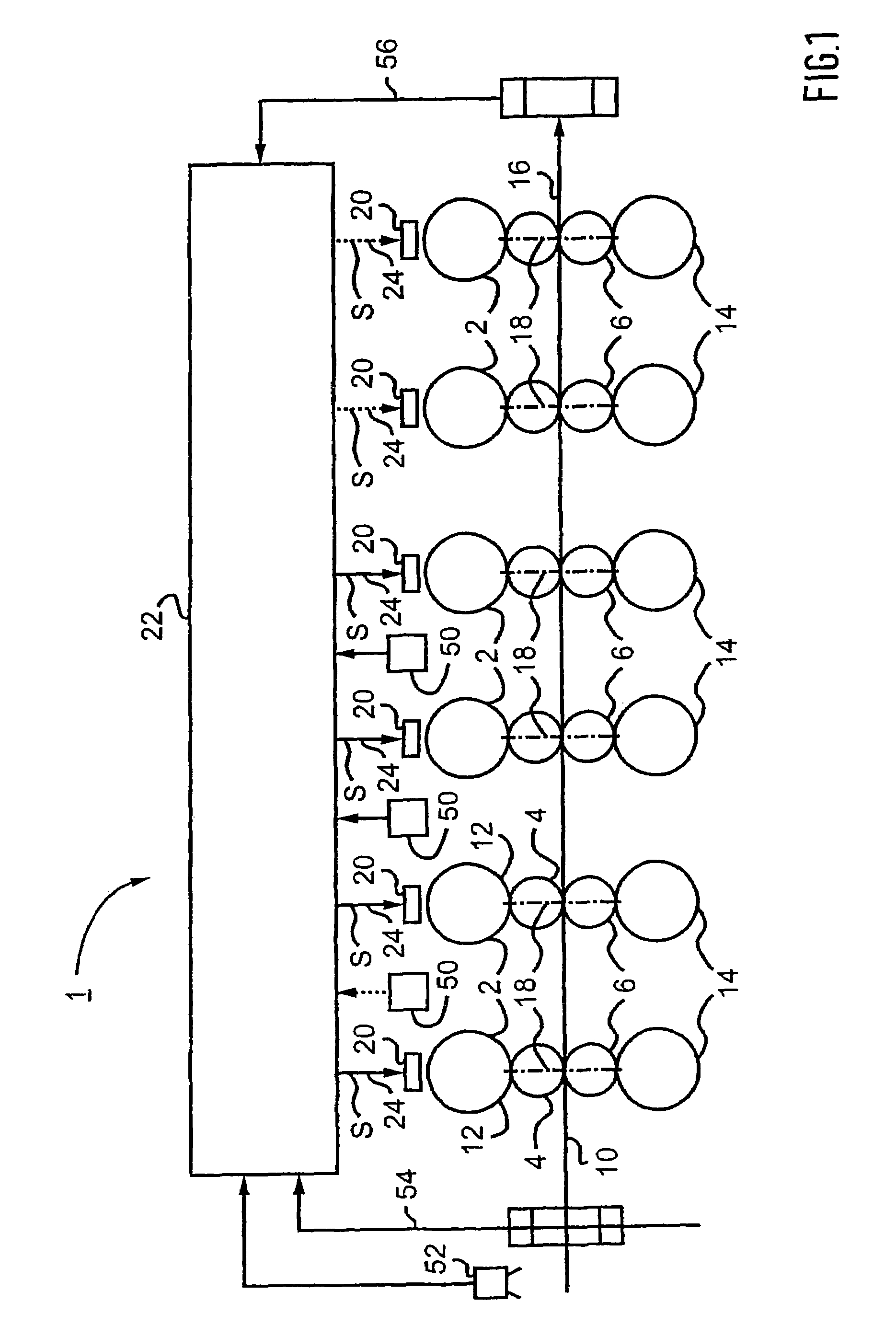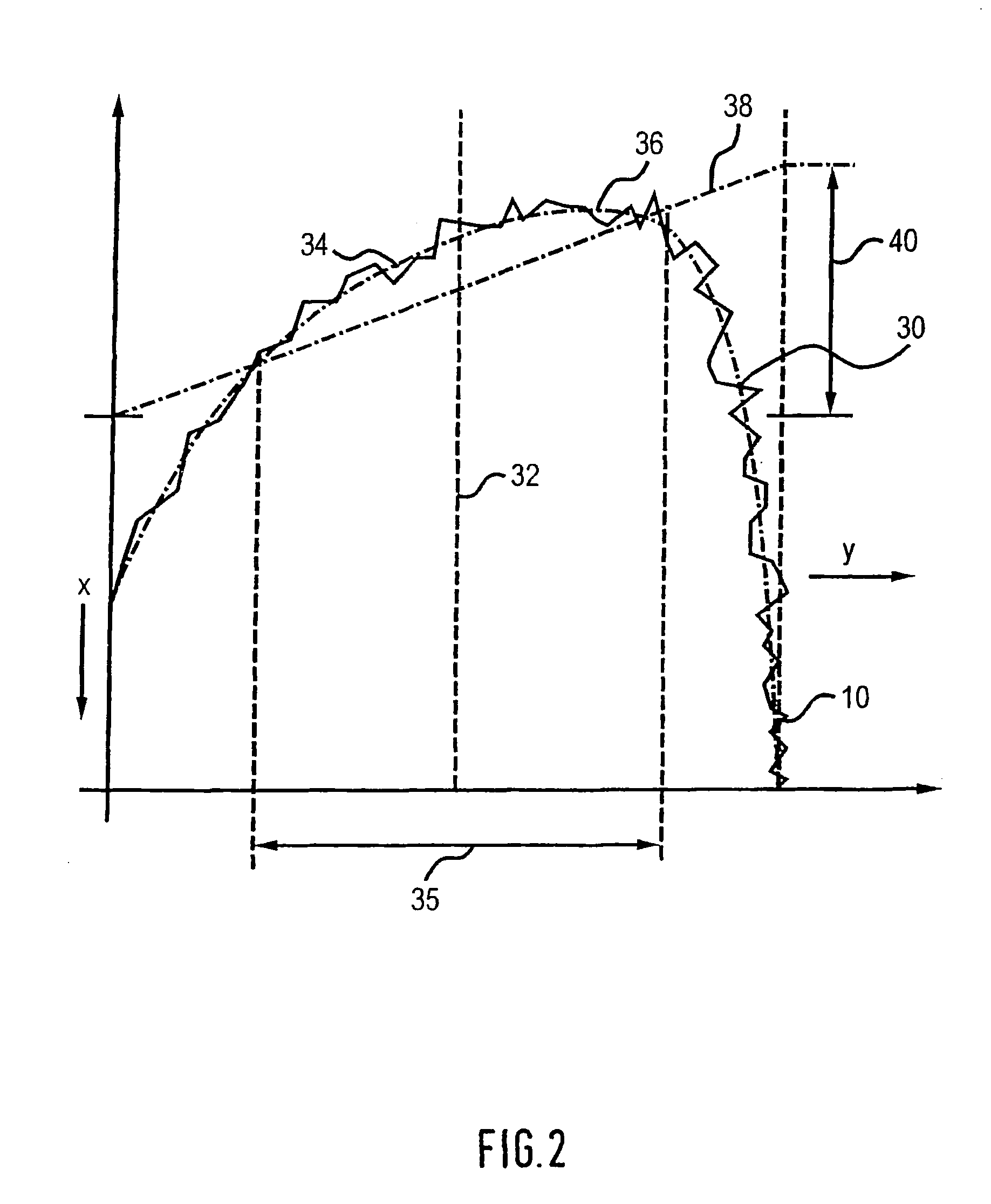[0011]Advantageously, a control value for the swivel angle of one or each roll stand is preset as a function of the contour of the strip trailing end of the product that has already been rolled. Specifically, a suitable swivel value of the roll stand about its particular axis of rotation makes it possible to have an especially systemic effect on the strip flow.
[0013]Alternatively or additionally, the information obtained by the evaluation of the contour of the strip trailing end is advantageously used in the operation of a so-called looper. At constant tensile force, locally higher tensile stress can develop, e.g., in the case of narrowing width of the rolling stock in the region of its trailing end, and this can have the undesired consequence of the strip breaking. When the minimum width actually present is known on the basis of the evaluation of the contour of the strip trailing end, the tensile force acting on the particular looper can be appropriately reduced, as necessary, so that this type of break can be prevented. On the other hand, to avoid long strip slivers at the trailing end of the strip, a separate adjusting unit can be assigned to the edger, by which, for example, long strip slivers can be compensated by greater width reductions at the trailing end of the strip.
[0022]In order to keep the asymmetric tensile stresses in the roll stand as small as possible during its
processing, the control value or each control value for the swivel angle of the given roll stand is advantageously readjusted in such a way that a contour of the strip trailing end develops which is symmetric with respect to the longitudinal center axis of the rolling stock. In this regard, minimization of a deviation of the contour of the strip trailing end from an asymmetric contour by suitable presetting of the control values for the swivel angle of the roll stands can be provided as a design criterion for an
automatic control device assigned to the mill train.
[0024]In an especially advantageous refinement, especially great flexibility in the
processing of the rolling stock can be achieved by presetting the
set point for the position of the maximum in the width direction or the
set point for the thickness taper of the strip trailing end in the extended plane as a function of the position of the given roll stand in the mill train. For example, strip-like rolling stock that is already asymmetrically formed in the strip cross-sectional direction can be worked in an especially advantageous way by first adjusting the swivel angle in the front roll stand as viewed in the rolling direction in such a way that the thickness taper of the entering strip-like rolling stock is restored, and the rolling stock is thus brought into a cross-sectional shape that is symmetric with respect to its longitudinal center axis. Of course, this makes it necessary to accept the development of strip lengthening of the rolling stock that is not uniform in the width direction in the front roll stand due to the variable
material flow. However, due to the still relatively great thickness of the rolling stock in the front roll stand, this type of nonuniform strip lengthening is possibly tolerable. In the following roll stands as viewed in the rolling direction, a symmetric contour of the strip trailing end in the extended plane can be adjusted. This type of flexible presetting of the set points or reference input values for the
automatic control thus allows reliable
processing of rolling stock that is initially relatively unsymmetric into a relatively symmetric final rolled product with especially small strip flow errors. Different set points are also provided for the strip leading end, the strip middle section, and the strip trailing end.
[0027]To provide a reliable supply of suitable input parameters for the
automatic control unit, it is advantageous for the automatic
control unit to be connected on the input side with a number of measuring devices assigned to each roll stand for determining the contour in the extended plane of the strip trailing end and / or the strip leading end of the product that has already been rolled. The measuring devices can be installed, for example, on their assigned roll stand in an elevated position, so that it is possible to determine the contour of the strip trailing end in a top view of the rolling stock.
[0030]The advantages achieved with the invention consist especially in the fact that, by considering the contour of the strip trailing end of a previously rolled product in its extended plane in presetting the control values for the swivel angles of the roll stands, incorrect adjustments in the swiveling of the roll stands, which have an
adverse effect on the rolling process and the rolling result, can be compensated in an especially simple and reliable way. In this regard, the detection of the incorrect adjustments by evaluation of preceding rolling results is provided in the manner of a learning or
adaptive system, such that the contour of the strip trailing end, as a direct effect of the
material flow in the strip-like rolling stock, allows an especially precise and reliable conclusion to be drawn about possible incorrect settings in the swivel angles of the roll stands. Moreover, the presetting of reference input values for the adjustment of the swivel angles as a function of the position of the given roll stand in the mill train allows especially flexible working of the rolling stock, so that even different types of preformed rolling stock can be worked with reliably high rolling quality.
 Login to View More
Login to View More 


